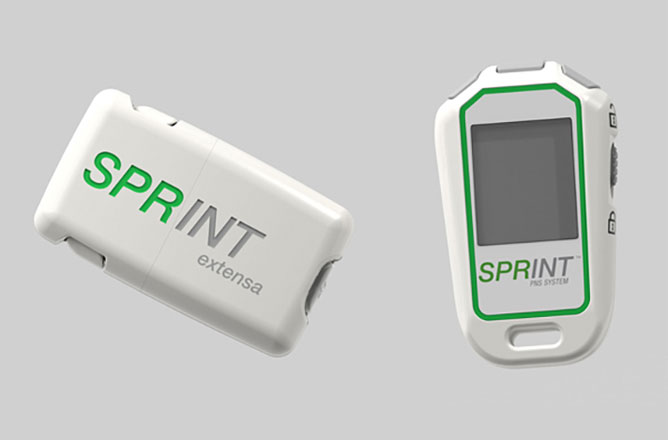SPR Therapeutics Gains FDA Clearance For Update To Its Percutaneous, Wearable Pain Relief Platform

Cleveland, Ohio-based SPR Therapeutics announced today that it has received FDA clearance for a new version of its percutaneous, wearable pain management device.
With this 510(k) approval, the Sprint Peripheral Nerve Stimulation (PNS) system is now available as a single lead (Sprint endura) or dual lead (Sprint extensa) offering, with the latter allowing for the non-surgical placement of two lead wires that are connected to a single device. In addition, the updated platform now supports rechargeable batteries and a Bluetooth-enabled controller for patient use.
“Our Sprint PNS platform is designed to deliver the least invasive and most user-friendly [percutaneous electrical nerve stimular] therapy experience for physicians and their patients,” Maria Bennett, founder, president, and CEO of SPR Therapeutics, said in a statement. “With the ease of use and dual lead capabilities we’ve built into the Sprint System we look forward to advancing the early use of neurostimulation as a non-opioid alternative for more patients while we continue to generate data that demonstrate significant and sustained pain relief following our 60-day therapy.”
SPR Therapeutics’ percutaneous electrical nerve stimulator is a non-narcotic alternative for chronic and acute pain relief indicated for up to 60 days of use in the back or extremities. By connecting a wearable stimulater to a 0.2mm wire placed through the skin, the system activates target nerve fibers to relieve patients’ pain. The therapy requires no permanent implants, invasive surgery, tissue destruction, or opioid prescription.
Despite its commercial name, the Sprint PNS system is classified by the FDA as a percutaneous electrical nerve stimulator (PENS). Devices classified by the agency as a PNS are intended for long-term implantation within the body.
The company has described the system as being ideal for shorter outpatient procedures, as the placement is completely reversible if necessary. A 2014 clinical investigation found use of SPR’s system to be associated with a 72 percent reduction in average pain among those presenting with moderate-to-sever post-amputation pain.
Read the full story at Mobi Health News.